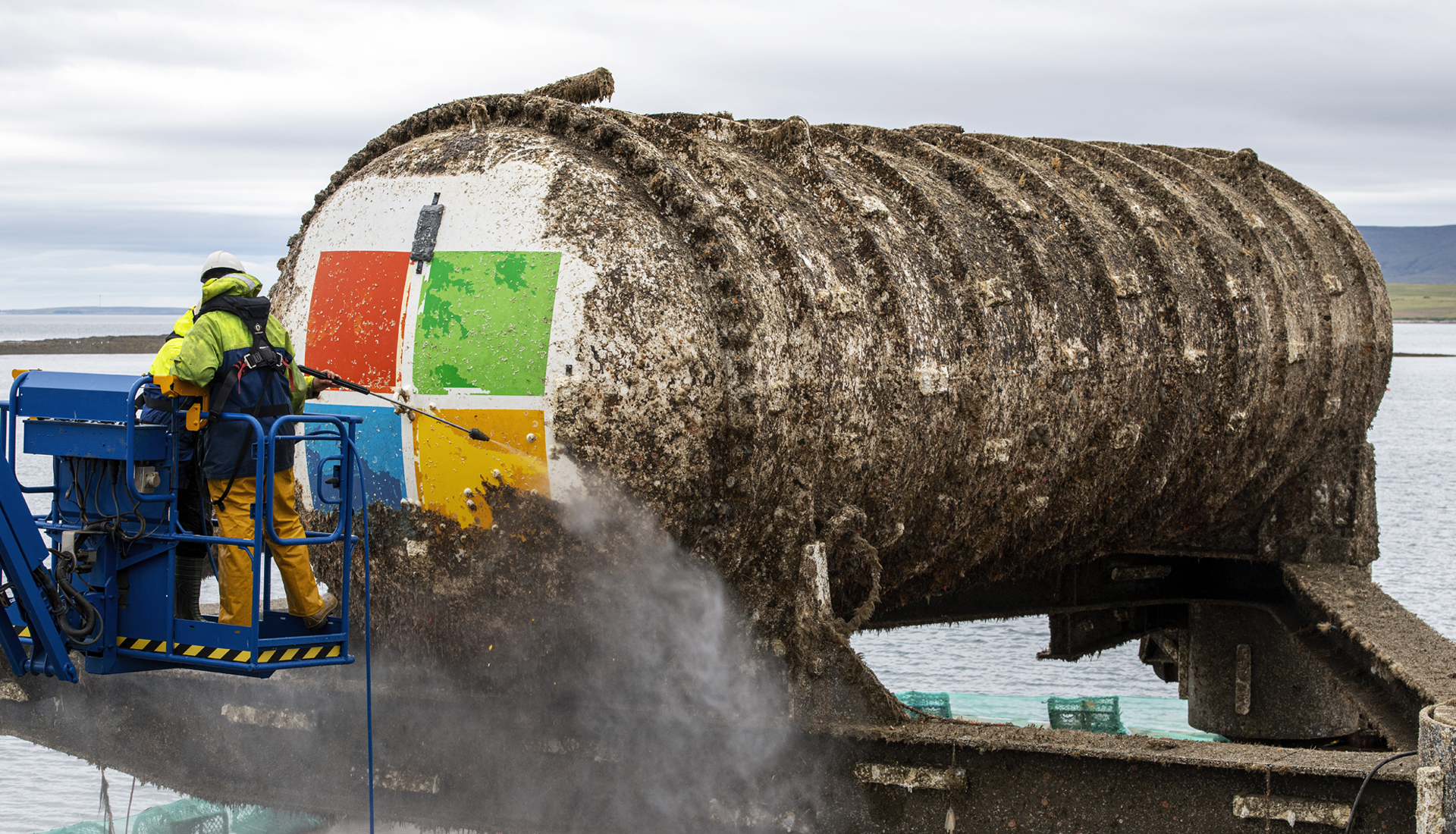Microsoft has been running an experiment to see if underwater servers could bring faster and more energy efficient internet to the coast, and it’s proved to be a resounding success.
In 2018 Microsoft had the idea of sinking an entire data centre to the bottom of the Scottish sea to see if a submerged setting could provide a more reliable and energy-efficient future for its servers.
Concluding a two-year experiment, Microsoft winched its nautical drum containing 864 servers and 27.6 petabytes – which are equal to a million gigabytes – of data back to the surface. Its team, dubbed Project Natick were on hand to see if their idea had proved a genuine success.
As it turns out, this underwater pod had just one-eighth of the ‘failure rate’ of conventional land hubs. By getting a grip of normally uncontrollable factors like air moisture and temperature fluctuations, engineers were able to create a stable environment where two of the most frequent issues – component corrosion and human interference – can be entirely avoided. That’s an important thing when fixing a busted server would require a 127 ft deep sea dive… ‘grab your flippers’.
Around half of the world’s population currently resides within 120 miles of coastal regions, and providing them with faster and steadier internet connections has been atop the agenda of tech start-ups for years. With Project Natick, Microsoft has found a way to drop state-of-the-art servers straight into localised bubbles, giving remote regions similar broadband speeds to major conurbations.
A big win in both an environmental and practical sense is that seabed temperatures lend themselves perfectly to maintaining a server’s number one requirement, staying cool. Not having to generate these conditions artificially means almost no energy is expended, and back-up systems using geothermal tech are also far more environmentally friendly than conventional heating methods.
Having got the functionality down a tee, next up for Microsoft is figuring out how to safely recycle retrieved data centres once they’ve reached the end of their lifespan.

















